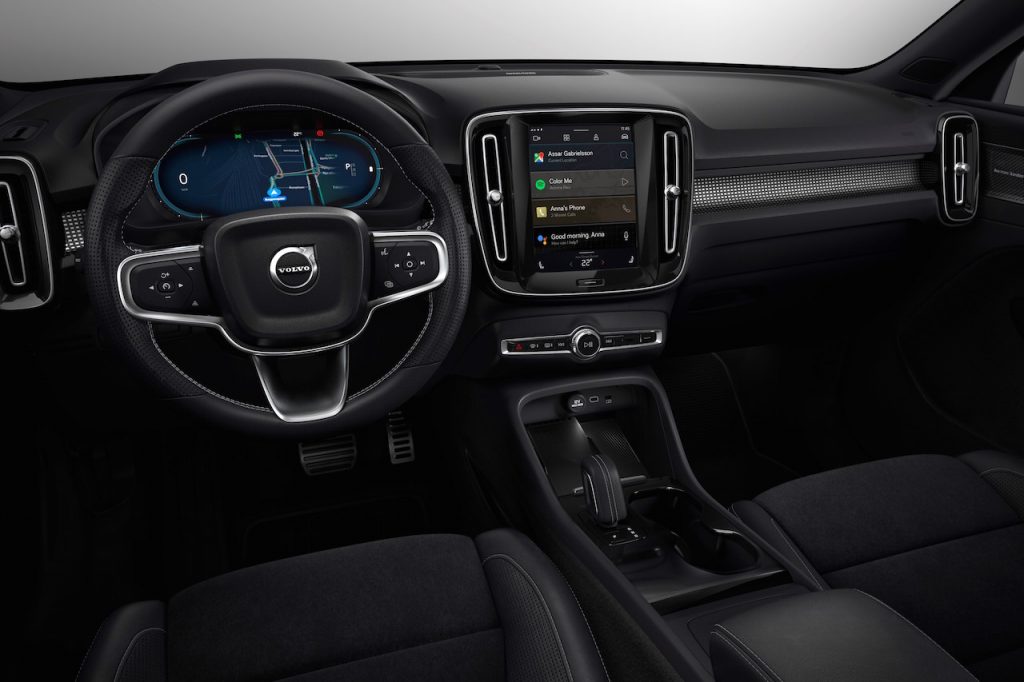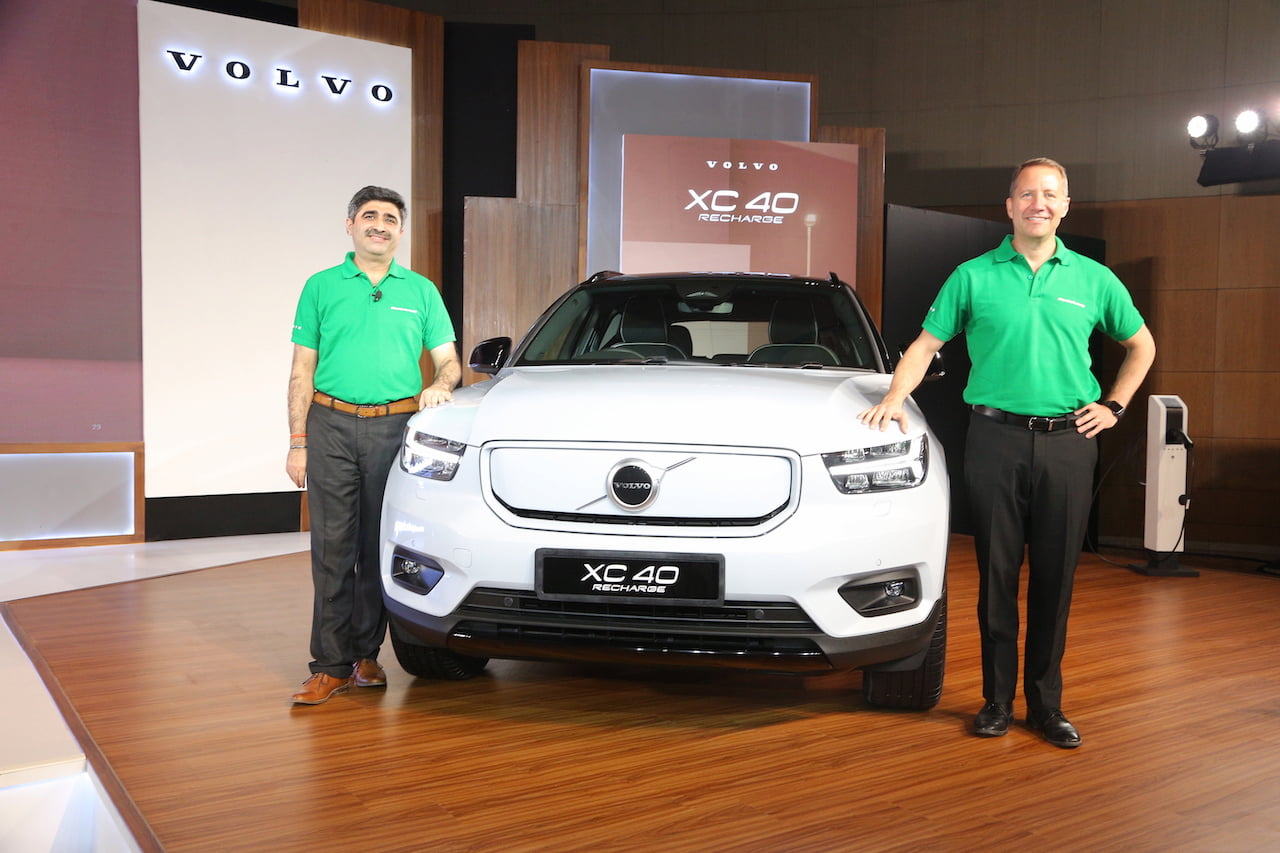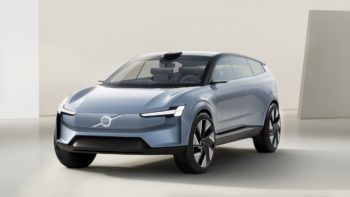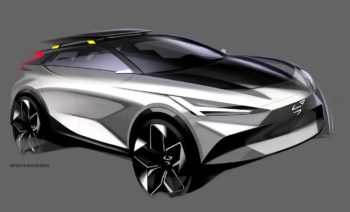The Volvo XC40 Recharge will be a CBU import in India when it is launched in October 2021. However the Volvo electric car could be localized next year.
The XC40 Recharge is costlier than the ICE XC40 due to its expensive battery pack. However, the significantly lower GST levied on EVs (5% as opposed to over 50% of ICE vehicles) should allow Volvo Cars to offset the higher cost of the electric powertrain and offer it at a price not much higher than the petrol/diesel XC40. In the future, the company may assemble the XC40 Recharge at the Bengaluru plant.
“We are evaluating (assembling XC40 Recharge in India),” Jyoti Malhotra, MD, Volvo Cars (India), told The Times of India recently. “We are developing a business case,” Malhotra added. According to TOI’s report, he also revealed that the company plans to do a feasibility study for assembling battery packs of EVs in India and exporting EVs from the country. The company plans to launch one EV per year in the country and phase out combustion models by 2030.

Volvo XC40 Electric (Volvo XC40 Recharge) range & specifications
The fully electric Volvo XC40 is Volvo’s first-ever production battery electric vehicle and the first model to appear in the new ‘Recharge’ car line concept. The Recharge variant features an all-wheel-drive powertrain, with two motors and a 78 kWh battery.
The Volvo XC40 Recharge has a range of over 400 km (WLTP) and its motor generates 408 hp and 660 Nm of torque. The battery charges to 80% of its capacity in 40 minutes on a fast-charger system. The pure electric luxury SUV can go from 0 to 100 km/h in 4.9 seconds and has a top speed of 180 km/h.
Not having an engine means that the vehicle provides owners with an additional storage space, via the so-called ‘frunk’ under the bonnet.
The Volvo XC40 Recharge became the first Volvo to get an infotainment system powered by Android, with built-in Google Assistant, Google Maps and the Google Play Store. Unlike Android Auto which is a secondary interface over Android, Android Automotive OS is a dedicated platform that is fully integrated with the Volvo On Call digital connected services platform. The XC40 Recharge is also the first Volvo to receive software and operating system updates over the air for its software and operating system.
Volvo XC40 Recharge price & positioning
Speaking to autocarindia.com in October last year, Charles Frump, ex-MD, Volvo Cars (India), had hinted that the first Volvo electric car price would fall between Rs 45-50 lakh (ex-showroom). Bookings for the all-electric Volvo XC40 Recharge in India will open in June. The ICE Volvo XC40 is available in India with only a petrol engine and in a single configuration, at INR 39.90 lakh (ex-showroom).
We expect Volvo Cars to allot a few hundred units of the Belgium-made XC40 EV to India in the first year.
Volvo Cars would be studying the customer pull for electric vehicle launches in India, and the decent response to the MG ZS EV confirms that a niche is opening up in the premium segment for zero-emission crossovers. The Jaguar I-Pace and the Audi e-tron electric vehicles are also scheduled to come out this year, but like the Mercedes EQC, being CBU imports, would be priced out of reach of most luxury car aspirants.
Volvo Cars aims to become a climate-neutral company by 2040
Volvo Cars has announced its plan to reduce its lifecycle carbon footprint per car by 40 per cent between 2018 and 2025, the first step towards making Volvo Cars a climate-neutral company by 2040.
As part of the goal, Volvo aims to generate 50 per cent of its global sales from fully electric cars by 2025, resulting in a 50 per cent reduction in tailpipe carbon emissions. Other short-term goals include 25 per cent reduction of CO2 emissions related to its global supply chain by 2025, 25 per cent share of recycled plastics in new Volvo cars by 2025 and a 25 per cent reduction of carbon emissions generated by the company’s overall operations, including manufacturing and logistics.
Featured Image Source: Volvo Cars

![Volvo XC20 back on the table as compact EV SUVs trend [Update]](https://electricvehicleweb.com/wp-content/uploads/2021/04/Volvo-electric-SUV-concept-unofficial-350x198.jpg)

